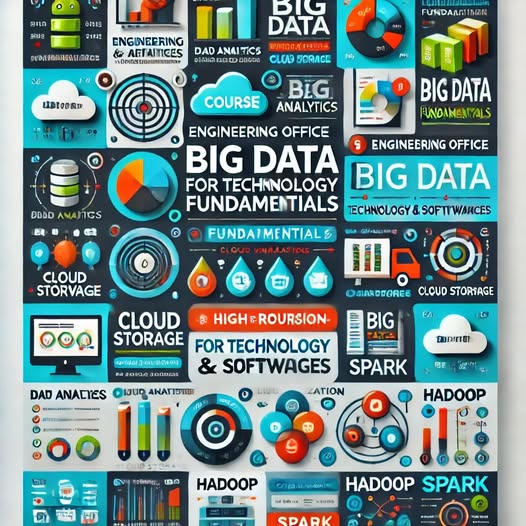
About Course
📘 Course Title: Big Data Fundamentals
Course Code: 27021-COs
🧩 Introduction
In the era of digital transformation, organizations generate and collect vast amounts of data daily. This course introduces learners to the world of Big Data — what it is, why it matters, and how it’s transforming industries. Through a combination of theory, hands-on exercises, and a mini-project, participants will explore the tools, technologies, and methodologies used to store, process, and analyze large datasets.
🎯 Objective
To understand the fundamentals of Big Data, its applications, and the use of Big Data technologies for data analysis.
📚 Part 1: Theoretical Questions
1. Introduction to Big Data
-
What is the definition of Big Data?
-
What are the main characteristics of Big Data known as the 5 V’s?
2. Big Data Technologies and Tools
-
List some tools and technologies used in Big Data analysis such as Hadoop and Spark.
-
What is the difference between traditional storage and distributed storage in Big Data?
3. Applications of Big Data
-
Mention three real-world applications of Big Data in the following domains:
-
Healthcare
-
E-commerce
-
Smart Cities
-
🔍 Part 2: Data Analysis Exercise
Instructions:
Choose an open dataset from one of the following platforms:
Analyze the dataset using a tool of your choice, such as:
-
Python (with libraries like Pandas, Matplotlib, or Seaborn)
-
Apache Spark
Questions to Answer:
-
What are the key insights extracted from the data?
-
Are there any clear relationships or patterns in the data?
-
What are your recommendations based on the analysis?
Include graphs or visualizations if applicable.
📝 Part 3: Research and Discussion
Write a short essay (500–800 words) discussing:
-
The challenges of handling Big Data, such as:
-
Security
-
Privacy
-
Managing massive volumes of data
-
-
The future trends in Big Data analytics:
-
AI integration
-
Real-time analytics
-
Edge computing
-
Cloud-based solutions
-
📤 Submission Guidelines
Submit your report in PDF format including:
-
✅ Answers to the theoretical questions
-
✅ Results of your data analysis with visualizations (if available)
-
✅ The research essay
Additionally:
-
Upload your code and analysis files to GitHub or Google Drive
-
Include a shareable link in your report
🧪 Evaluation Criteria
| Criteria | Weight |
|---|---|
| Theoretical Understanding | 30% |
| Accuracy and Effectiveness of Analysis | 40% |
| Quality and Structure of Essay | 20% |
| Overall Presentation & Organization | 10% |
🎓 Learning Outcomes
By the end of this course, learners will be able to:
-
Define and explain the core concepts of Big Data
-
Identify appropriate tools and technologies for Big Data analysis
-
Perform basic data analysis using Python or Spark
-
Visualize and interpret large-scale datasets
-
Discuss the challenges of Big Data including security and privacy
-
Produce a well-structured report combining theoretical and practical components
⏱️ Time Frame
-
Duration: 4 Weeks
-
Sessions: 8 Sessions (2 sessions/week, 1.5 hours each)
-
Final Project Deadline: End of Week 4
🧭 Course Format
-
Mode: Online or In-Person
-
Structure:
-
Live interactive sessions
-
Guided practical labs and assignments
-
Individual mini-project with open dataset
-
Research essay submission
-
Final evaluation with feedback
-
Course Content
Student Ratings & Reviews



